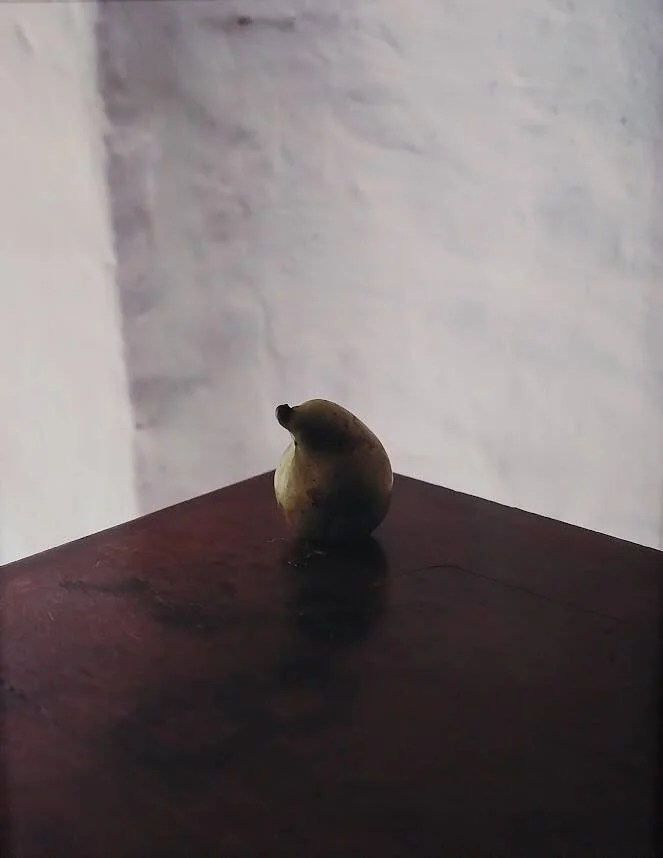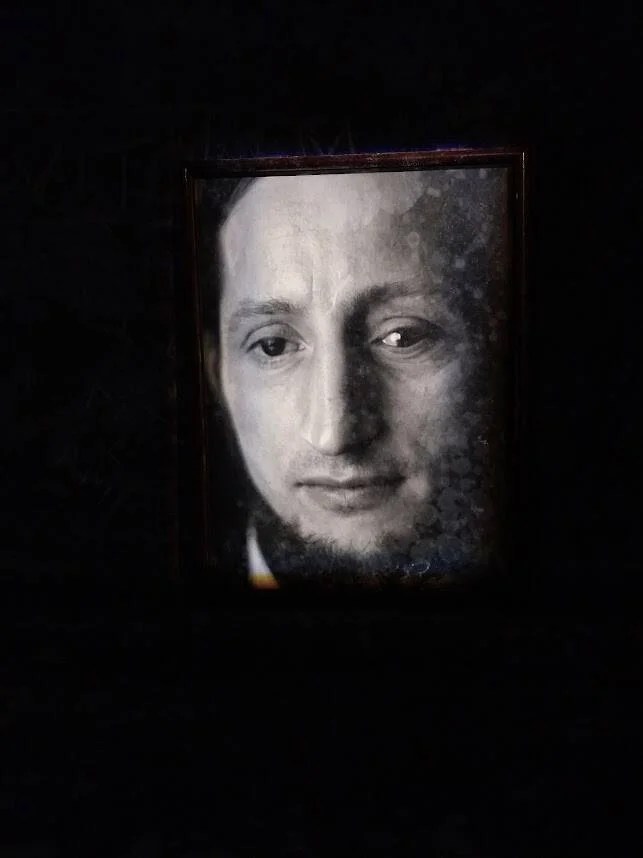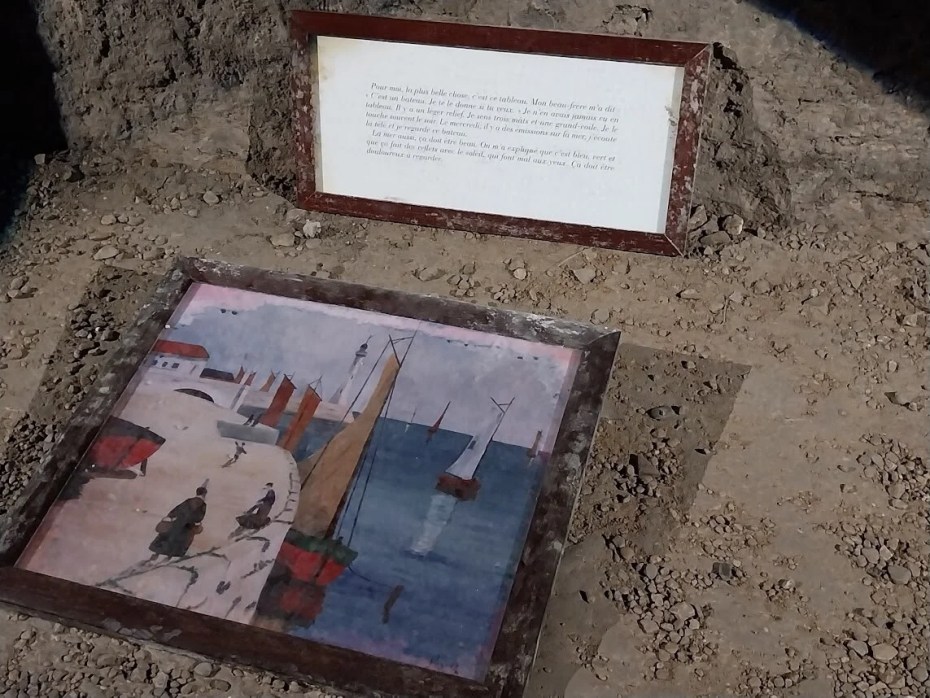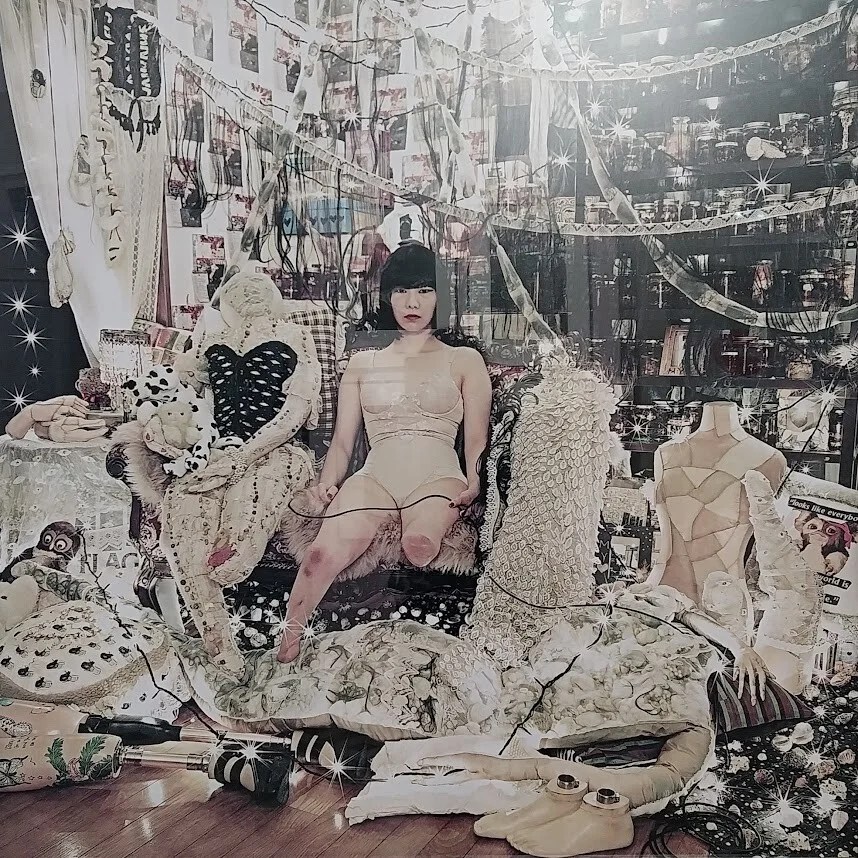Les Rencontres d’Arles 2024
A Personal Review of the 55th Edition of the International Photography Exhibition

© Ana Malnar: Maï Lucas, from the exposition “AU NOM DU NOM”, Arles 2024
“Photography is about storytellig”
– Christoph Wiesner, artistic director of the Rencontres d’Arles 2024
Introduction:
An institutional part of French cultural scene since 1969, the International Photography Exhibition in Arles was created on the initiative of artistic enthusiasts: the art historian Jean-Maurice Rouquette, Lucien Clerque-the he first photographer to be elected member of the Academy of Fine Arts of the Institut de France and the writer Michel Tournier. In the form of a photo-club, combining professional photographers and amateurs, the organization seeked the inspiration in American photography, and explored the relations between photography and painting, with cinema, fashion and advertising. The 1970s were a decisive moment for photography in France, starting with the institutional support from the French minister of culture Michel Guy, starting from 1975, and integration of photography in the collections of the National Museum of Modern Art Georges Pompidou and Orsay Museum. The choice of Arles, a coastal city and commune in the South of France, was an idea of Lucien Clergue, who looked at his hometown as an open city of crossroads, in accordance with his idea of opening the photography to the outside world. It is important to mention that due to its important heritage, Arles is classified as a City of Art and History and its Roman and Romanesque monuments have been included on the World Heritage List since 1981 by UNESCO. Jean-Maurice Roquette, who was also a director of the Réattu museum in Arles, made a huge contribution in opening a section of art photography in 1965 within the museum, Lastly, the creation in 1982 of the National School of Photography in Arles confirms the full recognition of this artistic discipline and the place of the city in its development. I have only discovered the city and the photographic exhibition this year, and with great enthusiasm decided to present the selection of 20 artists who have resonated with me by their technique and choice of themes.
DEBI CORNWALL

© Ana Malnar: Debi Cornwall, Model Citizens, Arles 2024

© Ana Malnar: Debi Cornwall, Model Citizens, Arles 2024© Ana Malnar: Debi Cornwall, Model Citizens, Arles 2024
Debi Cornwall is a multimedia documentary artist. Her exhibition Model Citizens is also part of 2024’s book that examines the blurred lines between reality and imagination, questioning how staging, performance and role-play shape our understanding of citizenship in a violent land whose people no longer have faith in politics or institutions. Cornawall observes in her work the way militarized nationalisms and performative fictions serve to manage difficult truths. In this sense, her work steps outside of the arena of pure photography becoming a political analysis. Cornwall received the Prix Elysée award in 2023, a biennial juried prize for mid-career photographers.
NANTÉNÉ TRAORÉ

© Ana Malnar: Nanténé Traoré, On the lookout, Arles 2024
Born in 1993, in his series “On the lookout”, Nanténé Traoré portrays a story of his own solitude, inspired by artists such as Valère Novarina, Depardon and Passoa. He re-thinks the ways we perceive disappearance, immobility, absence. His work is an iconography of the intimate, a story-telling of solitary life fragments. Traoré is represented by Gallery Sultana in Paris. His photographs have been published by Hachette editions, Points editions and George Bleu, in France.
TSHEPISO MAZIBUKO

© Ana Malnar: Nanténé Traoré, On the lookout, Arles 2024

© Ana Malnar: Nanténé Traoré, On the lookout, Arles 2024

© Ana Malnar: Nanténé Traoré, On the lookout, Arles 2024
Tshepiso Mazibuko is a visual poet from South Africa. Through intimate portraits, she examines the complexities of freedom, identity and intergenerational expectations in post-apartheid society. She was born in 1995 in Thokoza, a town 30 km away from Johannesburg. The main question in her photographic quest is what it means to be “born free”? The vast majority of the portraits reflect this burden of a post-apartheid heritage. In 2013, Mazibuko’s work was exhibited in the group exhibition “In Thokoza” organized by Rubis Mécénat, at the Ithuba Arts Gallery in Johannesburg. Today, she studies at the Market Photo Workshop thanks to the scholarship program set up by Rubis Mécénat. In 2015, she exhibited in the exhibition “Free from my Happiness” at the Ghent Photo Festival in Belgium, commissioned by Tjorven Bruyneel and Bieke Depoorter and organized by Rubis Mécénat.
COLINE JOURDAN

© Ana Malnar: Nanténé Traoré, On the lookout, Arles 2024

© Ana Malnar: Coline Jourdan, from the series Raising the Dust, Arles 2024
Coline Jourdan is a visual photographer born in 1993 in Lyon, France. Raising the Dust is the second part of a work questioning the effects of mining extractivism. This series focuses on the former gold and arsenic mine of Salsigne, located in the valley de l’Orbiel, in Aude. It was the largest gold mine in Europe and the largest arsenic mine in the world, having supplied arsenic necessary for the American army to create Agent Orange and Agent Blue during the Vietnam War. Today, extraction has stopped, but the mine continues to shape the landscape. What is obvious is that we see nothing. The nature, soils and waters of the Orbiel valley nevertheless present significant levels of pollution. Coline Jourdan began this research at the beginning of 2020 during the 1+2 residency, a residency based in Toulouse combining photography and sciences in partnership with the CNRS. Raising the Dust combines documentary photography, scientific reporting and a visual approach.
Cemil Batur Gökçeer

© Ana Malnar: Cemil Batur Gökçeer, from the series Thin Air, Arles 2024

© Ana Malnar: Cemil Batur Gökçeer, from the series Thin Air, Arles 2024
How to experience and surpass the disasters, both personal and natural, that life throws at us, is the question behind the series Thin Air, by the Turkish photographer Cemil Batur Gökçeer. By using triple exposure, with every roll being re-used twice, the artist creates an element of doubt, complexity and randomness, all at the same time. The artist compares this process to the ritual of coffee ground reading to which he is familiar, in other words to a form of interaction which opens a new breach in the way of reading and interpreting essential issues.
SOPHIE CALLE

© Ana Malnar: Cemil Batur Gökçeer, from the series Thin Air, Arles 2024

© Ana Malnar: Cemil Batur Gökçeer, from the series Thin Air, Arles 2024








© Ana Malnar: Cemil Batur Gökçeer, from the series Thin Air, Arles 2024
Working on narrative and intimacy, Sophie Calle has developed, since the end of the 1970s, an approach that can be affiliated with the artistic movement of Personal Mythologies. “Finir en beauté” or “To end in beauty” represent objects from her series “The Blind ones”, that have been damaged by mold. This series explores how blind people talk about beauty, the last image they saw, colors, etc. Exposed in the cryptoporticus gallery in Arles, Calle organized the last offices for their objects in the most dramatic and extravagant way possible, partially thanks to the sound production by François Leymarie. This outstanding exposition can be felt as a personal investigation of memory and disappearance.
VASANTHA YOGANANTHAN

© Ana Malnar: Cemil Batur Gökçeer, from the series Thin Air, Arles 2024

© Ana Malnar: Vasantha Yogananthan, Past Tense, exposed in the Saint-Trophime cloister, Arles 2024

© Ana Malnar: Vasantha Yogananthan, Past Tense, Arles 2024
Vasantha Yogananthan is a self-taught photographer born in Grenoble, France, in 1985. The series Past Tense is the first part of his long-term project entitled Images Imaginaires, in which he explores landscapes and characters of the French Provence. Since 2009, Vasantha Yogananthan has developed a unique photographic style that aims to respond with delicately to a subject or a place.He is deeply attached to film photography for its aesthetic qualities and the philosophical slowness of the process. He is also the co-founder of the publishing house Chose Commune, Vasantha Yogananthan has carried out his projects in immersion and over a long period of time, first in France on the beach of Piémanson (2009-2013), then in India and Sri Lanka around the myth of Rāmāyana (2013-2021). He is represented by Jhaveri Contemporary (Mumbai) and The Photographer’s Gallery Print Sales (London).
I’m So Happy You Are Here
Japanese Women Photographers from the 1950s to Now
ISHIUCHI MIYAKO

© Ana Malnar: Vasantha Yogananthan, Past Tense, Arles 2024

© Ana Malnar: Ishiuchi Miyako, mother, Arles 2024

© Ana Malnar: Ishiuchi Miyako, Mother, Arles 2024

© Ana Malnar: Ishiuchi Miyako, Frida by Ishiuchi #34, série Frida by Ishiuchi. Arles 2024
Ishiuchi Miyako, born in 1947 in the Nitta District, Gunma, started her photographic career shooting familiar streets and buildings in her hometown Yokosuka, one of the largest post-war American naval bases in the Pacific. She is also known for being part of the radical political movement of Tokyo at the end of 1960’s. Miyako’s photographic interest is centered around recording material traces of the passage of time. In her series Mother from 2002, she documented her mother”s possessions as a means of coming to terms with her death. With this series she has represented Japan at the 2005 Venice Biennale of contemporary art. She was also invited by the Hiroshima Peace Memorial Museum to capture everyday objects which had belonged to victims of atomic bombing and commissioned by The Museum Frida Kahlo to photograph Frida’s personal objects.
USHIODA TOKUKO

© Ana Malnar: Ishiuchi Miyako, Frida by Ishiuchi #34, série Frida by Ishiuchi. Arles 2024

© Ana Malnar: Ishiuchi Miyako, Frida by Ishiuchi #34, série Frida by Ishiuchi. Arles 2024
With her series My Husband, Ushioda Tokuko reveals a story that remained private for almost 40 years, the story of Tokuko Ushioda, her husband Shinzo Shimao, and their daughter Maho. Through her objective, Tokuko managed to capture the solitude of the photographer within a patriarchal Japanese society where a woman’s main duty is the one of the mother and spouse. Born in Tokyo, Tokuko graduated from Kuwasawa Design School in 1963. In 2018 she won the Photographic Society of Japan’s Lifetime Achievement Award for her series Bibliotheca.
RINKO KAWAUCHI

© Ana Malnar: Rinko Kawauchi, Untitled, 2002-2004, from the series “The eyes, the ears”, Arles, 202
The photographer Rinko Kawauchi is best known for her lyrical images of elemental subjects. She captures ordinary life moments in an almost hallucinatory perspective. Born in 1972 in Shiga Prefecture, Japan, Kawauchi began pursuing photography while attending the Seian College of Art and Design in Osaka during the early 1990s. She has worked mainly in advertising and published several books including Illuminance (2011), Ametsuchi (2013) and Halo (2017).
HARA MIKIKO

© Ana Malnar: hara Mikiko, Untitled, Arles 2024
In Hara Mikiko’s work, chance has always held a preponderant place,as she photographs her subjects without looking at the image through the viewfinder. From there, her photographic technique may seem illogical, she triggers her camera instinctively, accumulating “fragments of everyday life”, never framed, often blurred, her palette of pastel colors accentuating the impression of evanescence and lightness . Mikiko was born in 1967 in Toyama Prefecture. In 1994 she graduated from Tokyo College of Photography, and continued as a research student until 1996. Her works are part of the collection of the Bibliothèque nationale de France, Paris, the J.P. Getty Museum in Los Angeles, Fotomuseum Winterthur in Switzerland, San Francisco Museum of Modern Art SFMoMa) and others.
MARI KATAYAMA

© Ana Malnar: Mari Katayama,Shell, 2016, Arles 2024
Suffering from a rare disease since childhood, Mari Katayama underwent a partial imputation of her legs at the age of 9. This physical condition has become an artwork subject, where Katayama photographs herslef as a living sculpture and depicts her personal struggles of isolation. Katayama believes that tracing herslef helps connects with other people, and that her everyday life can also be connected with the society. Her sel-portraits are also a self-healing experience, where she openly visibilises her congenital tibial hemimelia condition by using embroided objects and decorative prostheses. Katayama was born in 1987 in Gunma, Japan. Her work has been exhibited in the 58th edition of the Venice Biennale in 2019.
KAZUMA OBARA

© Ana Malnar: Obara Kazuma, Untitled, from the Waves and Home series, Minami Soma, Fukushima, Japan, 2013

© Ana Malnar: Obara Kazuma, Untitled, from the Waves and Home series, Minami Soma, Fukushima, Japan, 2013
Kazuma Obara was born in Japan in 1985. Mainly focused on hidden victims in our society, Obara resigned from his job in financial industry after the tsunami and nuclear disaster in 2011, to start documenting the disaster area where his best friend’s house was located. He was also the first photographer to convey a story from inside a power plant, capturing images from inside Fukushima Daiichi nuclear power plant. Obara traveled to Ukraine from February 2015 to April 2016 and photographed the portraits of those directly impacted by the explosion and who saw their lives changed forever. Exposure presented his thirty portraits of men and women of Chernobyl, in a set of two books and a replica newspaper, in 2018.
JAMEL SHABAZZ

© Ana Malnar: Jamel Shabazz, Arles 2024
Born in 1960 in Brooklyn, Jamel Shabazz is best known for his iconic photographs of New York City during the 1980s. He is a documentary, fashion and street photographer, as well as the author of 12 monographs. Through analog film and digital photography, Shabazz’s work showcases the cultural vibrancy of New York’s black and brown communities. In 1980, as a committed photographer with a clear vision, he made it his mission to thoroughly document various aspects of life in New York, from youth culture to a wide range of social conditions. Because of their spontaneity and uniqueness, the streets and subways became the backdrop for many of his photographs.
PARIBARTANA MOHANTY

© Ana Malnar: Paribartana Mohanty, A Fate’s Brief Memoir, Arles 2024

© Ana Malnar: Paribartana Mohanty, A Fate’s Brief Memoir, Arles 2024
Paribartana Mohanty, a multimedia artist working with new media, video, performance lectures and painting, was born in 1982 in Odisha. His recent works explore the “environmental disaster landscapes” emerging near the cost of the Bay of Bengal in Odisha, where he studies the deep impacts of recurring cyclons, tsunamis and land erosion on the life of marginal communities. In his work Mohanty is focused on how technologies of algorithmic networks, digitalization, data acces and surveillance shape the public perception about ‘natural’ disasters. He is a member of the artistic collective WALA, a Delhi-based collective formed in 2009.
RAJESH VORA

© Ana Malnar: Rajesh Vora, from the series Everyday Baroque (2014-2019), Arles 2024

© Ana Malnar: Rajesh Vora, from the series Everyday Baroque (2014-2019), Arles 2024
Born in 1954 in Rajkot, India, and living in Mumbai, Rajesh Vora has been photographing for over 30 years, including 15 years spent as a photographer for COLORS magazine. His interest is primarily focused on the environment and disappearing habits, which is perfectly shown in his series Everyday Baroque, exhibited for the first time in 2016 at PHOTOINK (New Delhi), and later on reconcieved as Everyday Moments in 2022 for Surrey Art Gallery in Canada. The series showcases the unique Punjabi tradition of adorning homes with sculptural water tanks, airplanes and soccer players. These images of playful, idiosyncratic sculptures caracterize the landscapes across hundreds of Punjabi villages.
RANDA MIRZA

© Ana Malnar: Randa Mirza, BEIRUTOPIA, Arles 2024

© Ana Malnar: Randa Mirza, BEIRUTOPIA, Arles 2024
Born in 1978 in Beirut, Lebanon, Randa Mirza is a visual artist who works with photography, video, installation, and performance. Rooted in a feminist and decolonial discourse, her artistic practice questions hegemonic systems of thought and standardised representations. By making current symbolic, social, and political constructions visible, her work questions the point of view of the gaze, and the contexts in which images are produced and received, bringing to light what is forgotten or intentionally hidden. As a space for reflection, reparation, and resistance in the face of violence, her work falls somewhere between documentary, personal expression, and artistic writing. Her series BEIRUTOPIA is long-lasting projects of 10 years, follows the story of the history of Beiruth, through the Libaneese civil war and going towards the construction boom of the last 30 years and recent economic collapse, the pandemic and the explosion of the port of Beirut. The series is, as the author explaines, built on construction and deconstruction, history of violence surrounding the city that is visible behind the beautigul facade of her images.
TARRAH KRAJNAK

© Ana Malnar: TARRAH KRAJNAK, from the series Négatifs contact 1979, Arles 2024
Krajnak’s photograph from the series Négatifs contact is part of the 18-large-fromat photos produced in a performance at as-is gallery in Los Angeles. Using a temporary darkroom, multiple projections, large format cameras, and re-photography, the artist imaginatively returned her body to Lima, Peru in 1979, the year of her adoption from the orphanage. In tihis sense, Krajnak invents new, visible ways in showing how violent or traumatic histories can be held in our bodies. Her work explores the multi-temporality of the photographic medium, and the potential of the darkroom itself, as a site of performance or spectro-poetics. Krajnak is currently based in Los Angeles, working as a associate professor of Art at UCLA university. She is represented by Zander Galerie, Cologne/Paris.
MARTHA ROSLER

© Ana Malnar: Martha Rosler, from the House Beautiful: Bringing the War Home; New Series series, Arles 2024

© Ana Malnar: Martha Rosler, from the House Beautiful: Bringing the War Home; New Series series, Arles 2024
Martha Rosler is an American photographer and videographer born in 1943 in Brooklyn. With works composed of photomontages, films and installations, her aim is to shade light on “underground” questions, like the way we live our lives, or the way US politics manages affaires on our behalf. A former political activist, she studied at the University of California in San Diego, where she met artists such as Allan Kaprow and Miriam Shapiro, and the philosopher Jean-François Lyotard, who will have a lasting impact on her thinking. Rosler is best known for expressing virulent and critical positions against the war in Vietnam and on feminist questions.
MO YI

© Ana Malnar: Mo Yi Landscape Outside the Bus, Arles 2024
Born in Tibet in 1958, Mo Yi is a former professional football player turned artist. He is one of the most important artists of Chinese contemporary photography that emerged from 1980s. Mo Yi captures the alienation and opression of the urban in the urban areas of China, often with his proper image appearing on the photograph. His works are part of collections of the Cinese Image and Video Archive (Canada), Guang Gongdong museum of Art (China), Museum of Fine Arts in Houston (USA) and the Walter Collection (USA).
Leave a Reply